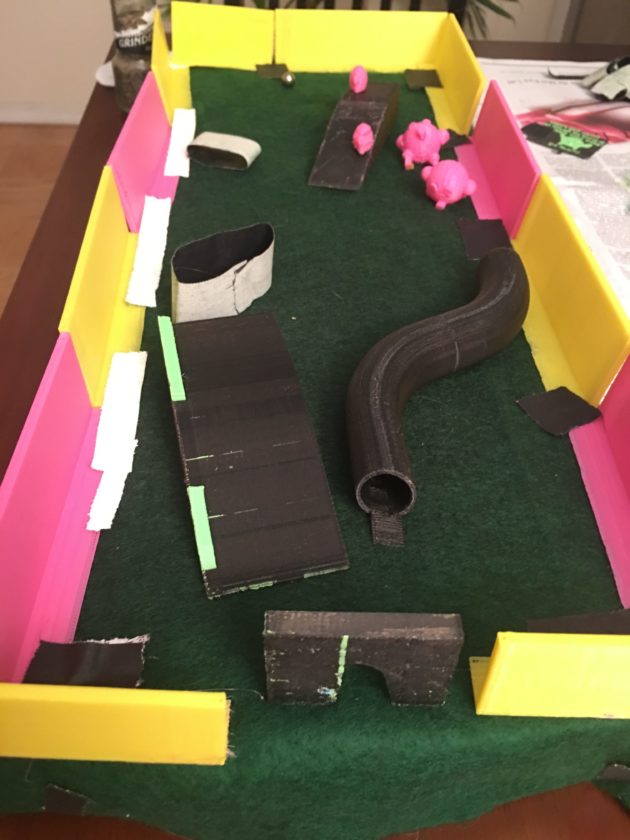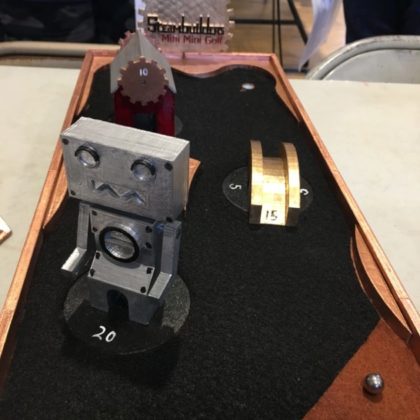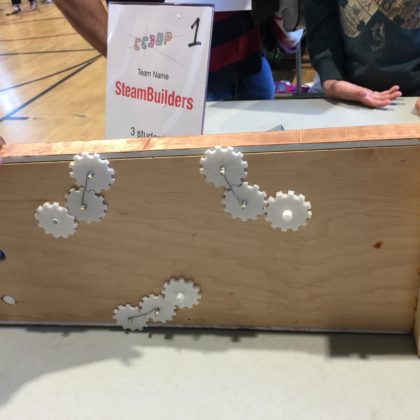
3D modeling can seem daunting to the uninitiated, but it’s not as inaccessible as you may think. I’ve taught CAD modeling for 3D printing to students of all ages, mainly through a nonprofit after-school STEAM program in New York City, Dimension Learning. We’re software-agnostic and use 3D printing as a tool to teach students design thinking and incorporate humanities into STEM. Students progress from neophytes to accomplished designers in weeks.
Every May, Dimension Learning enters a citywide K-12 competition called Creative Challenge in 3D Printing (CC3DP). The brainchild of Yvonne Shortt, executive director of RPGA Studio, CC3DP brings a new challenge each year, from making puzzles to 3D printed boardgames.
This year students designed a one-hole “mini mini golf” course that fits on a 8″ x 20″ wooden platform. They made obstacles, traps, walls, and a putter, and they could use water and sand, like on a real golf course. But any objects taller than ⅛” had to be 3D printed. For teams without access to 3D printers, Shapeways offered a budget of $500 per school to cover prototyping and final prints, and 3DHubs offered a discount.
After a short lunch, students presented their golf courses to a panel of judges. As a coach, I wasn’t allowed to watch students defending their masterpieces, but their professionalism impressed judges like Core77 assistant editor Emily Engle (don’t miss their full coverage of the event). “Judging was equal parts exciting and heartbreaking after seeing how invested the kids were in their designs,” she said.
The students from my class at the YMYWHA of Inwood & Washington Heights broke into two teams, each with their own golf course. Team Oompa Loompas made a course called Candy Land that featured chocolate-bar walls printed in PolyWood filament on my Dremel 3D20. The marshmallow star checkpoints were printed in PLA on the Dremel.
The other team’s course is based on the popular video game character Kirby. Everything they designed was printed on Dimension Learning’s FlashForge Dreamer, including the multicolor prints.

Under construction
My 3rd and 4th graders spent only a few weeks designing the golf courses, and they were nervous to be competing against older students, some of whom may have been working on this all year. Once they arrived at CC3DP, however, they were exuberant.
The competition was fierce. While we didn’t win any prizes, I believe the experience was very valuable for these kids.
- This entry by Steambuilders had rotating obstacles
The 3D printing industry has been dominated by white men, but I think this will change. I’ve taught 3D printing in Harlem, Brooklyn, and the Bronx. Half my students this semester are girls, and usually I have more girls than boys in my 3D printing classes.
Competitions like CC3DP and STEAM programs like Dimension Learning are so important for fostering the next generation of scientists, engineers, and designers. They build confidence and marketable skills. In fact, some of my junior designers have become budding entrepreneurs, designing fidget spinners in their spare time to sell to their peers. Who knows what they’ll dream up next?
Shapeways EDU is dedicated to supporting access for all students to advanced printing and has been a sponsor of CC3DP since its inception in 2014. Are you working with students and educators to incorporate making and design into the classroom? Then be sure to learn more about our EDU discount program and connect with our education team.




